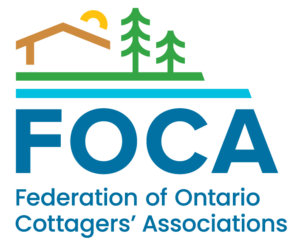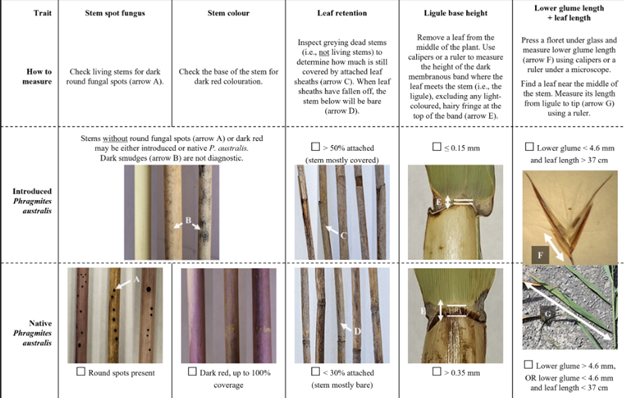
Invasive Phragmites has been called Canada’s WORST invasive species. Management and eradication of invasive Phragmites has become an increasing cost for municipalities across Ontario.


Phragmites is a very tall and fast-growing perennial grass now covering nearly 17,000 hectares of shoreline, wetlands and roadsides. It creates ecological dead-zones and impacts at-risk species. Learn more from the Ontario Phragmites Action program, here: Home – NEW – Ontario Phragmites Action Program

May 2025 – FOCA met Meagan Ward (Environmental and Life Sciences Graduate Program, Trent University) at the Ontario Biodiversity Summit and her research on wetland recovery after hand-cutting invasive Phragmites at Point Pelee. Two years later, the treated site showed signs of remarkable ecological recovery. Congratulations, Meagan, on receiving the People’s Choice Student Poster Award at the Summit, and for sharing your research with our members here and in the 2025 edition of the FOCA Lake Stewards Magazine. Read the abstract of the paper in this digital posting.
April 2025 – Our partners at the Invasive Species Centre (ISC) are once again offering a free Phragmites DNA Screening Program to help Phrag-fighters determine between native, invasive, or hybrid versions of the plant. To be eligible, the sample must be collected from a site in Ontario where management is underway or planned in 2025 or 2026. Get details from ISC here.
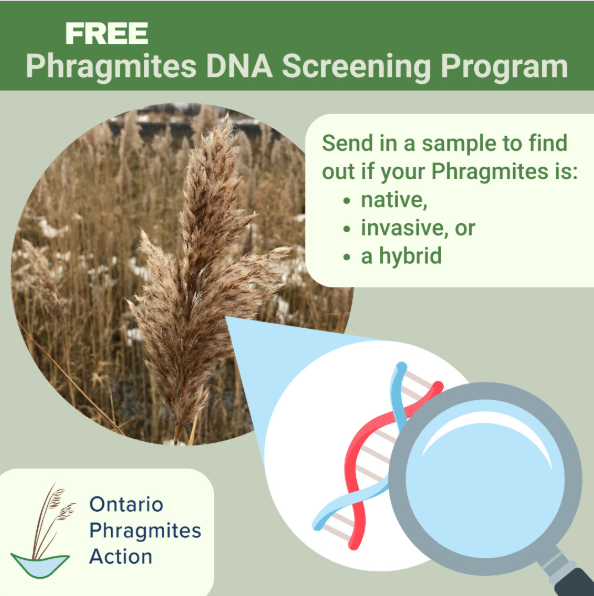
EARLIER NEWS:
2025 – the Ontario Phragmites Management Regional Plan Guidebook is a free guide designed to support municipalities and their regional partners throughout Phragmites eradication projects. To learn how to manage invasive Phragmites in your area, download the guide (29 pages): https://bit.ly/4bFRaiA

September 27, 2024 – Can Ontario Stop Invasive Phragmites’ Chokehold on Wetlands? ONsite (TVO Today video 11:15 minutes)
May 28, 2024 – Ontario scientists are using caterpillars to combat an invasive aquatic plant (CBC News, Hamilton) – Since 2021, the team has released over 21,000 caterpillars and larvae at around 30 locations across Ontario such as this. The Canadian Food Inspection Agency approved two moth species for use as biocontrol in 2019. The caterpillars only eat phragmites, and as they grow, they’ll “hopefully” munch through three or four stems and “do a fair amount of damage to the phragmites.”
June 25, 2024 – FOCA’s partners at the Invasive Species Centre (ISC) have announced the 2024 Phragmites DNA Screening Program is back, to help site managers determine if the plant they have is native or invasive Phragmites, or a hybrid. Applications are particularly encouraged from areas in central and northern Ontario where native Phragmites is more frequently observed, and from newer site managers in other regions. Learn more from ISC here.
An excellent resource to help distinguish between the two types of phragmites can be found through the Great Lakes Phragmites Collaborative; visit https://www.greatlakesphragmites.net/phragbasics/native-vs-nonnative/
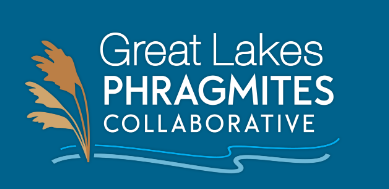
In related news, ISC encourages everyone to refer initially to the visual identification traits explained in the journal article of McTavish et al (source of the image at the side): June 2023 – Best morphological [outwardly visible] traits for rapid and simple separation of natural and introduced common reed (Phragmites australis) are described as follows; consult the article link for more information:
- % of leaf sheaths retained on old dead standing stems (if more than 50% still attached, likely invasive; if less than 30%, likely native)
- ligule height: remove a leaf from the middle of the plant and measure the basal tissue – a darkened membranous band where the leaf meets the stem; exclude any light-coloured hairy fringe at the top of the band (refer to images in the journal article, Figure 3): if greater than 0.35mm, the native species is indicated
- stem colour (dark red pigmentation indicates native stems)
- fungal stem spots indicate the native variety (but not all native plants display these spots, so the absence of spots is not conclusive)
- glume length (from ligule to tip of leaf) and leaf length comparisons, with the native variety tending to have a longer lower glume and/or shorter leaf length (see article, Figure 3 for details)
May 2, 2024 – new round of program funding for 2024 projects: associations were encouraged to apply by May 30th for funding from the Green Shovels Collaborative for projects to take place this year, to help map and manage invasive Phragmites. There was an emphasis this year on collaborative plans – so applying together with adjoining lakes or regionally might increase your chances. Get details and apply here: https://www.invasivespeciescentre.ca/grant-opportunities/invasive-phragmites-control-fund/

Learn about invasive Phragmites in video resources and links below, and download FOCA’s 2-page info brochure (PDF).
March 2024 – review the posted video recordings of the Ontario Invasive Plan Council‘s virtual event with experts in the field providing information on invasive Phragmites management:
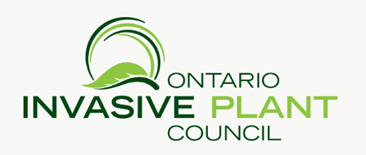
View an earlier FOCA webinar: Invasive Phragmites (June 2021). Join FOCA and Brooke Harrison of Georgian Bay Forever, discussing invasive Phragmites: its characteristics, its spread, and its controls. (Online, 1 hour)
During the webinar, attendees asked how to report areas of invasive Phragmites spotted along highways. The answer is to contact the Ontario Ministry of Transportation online, or call 416-235-4686 (Toll Free 1-800-268-4686).
Following successful projects by FOCA member Associations undertaken in 2022 with Green Shovels Collaborative funding (learn more about the Collaborative below), FOCA was pleased to announce that we have funded a new round of 2023 proposals from our member Associations for on-the-ground projects focused on invasive Phragmites management, starting this summer and to be completed by February 2024.
Related News: Nov.10, 2023 – Lake Wahnapitae group wins grant to fight spread of invasive plant (Sudbury Star)
April 26, 2023 – media release: new Phragmites map to be unveiled at NW Ontario Municipal Association 2023 Conference & AGM in Thunder Bay on April 28th (ECO Strategy)
Wondering how to manage invasive Phragmites? This new guide is the definite resource: Invasive Phragmites – 2021 Best Management Practices in Ontario (download PDF, 73 pages) from the Ontario Invasive Plant Council.
Learn even more about invasive Phragmites from our partners at the Invasive Species Centre.

For more from Green Shovels Collaborative partners about the projects undertaken in 2021, watch this video:
And also consult additional resources about Phragmites here: https://www.greatlakesphragmites.net/
Tackling the problem of invasive Phragmites (European Common Reed):
FOCA is part of the Green Shovels Collaborative of conservation organizations that have a shared interest in protecting nature and the economy. The Green Shovels Collaborative includes:- Federation of Ontario Cottagers’ Associations
- Nature Conservancy of Canada
- Ontario Federation of Anglers and Hunters
- Invasive Species Centre
- Ducks Unlimited Canada
- Ontario Invasive Plant Council.
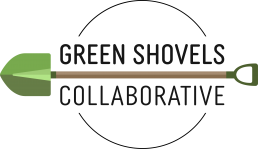
With funding support from the Ministry of Natural Resources and Forestry, one goal of the Green Shovels Collaborative was to prepare a Strategic Framework for Phragmites Management in Ontario. The document was released in late 2021 in draft format, for public feedback:
- Strategic Framework for Coordinated Management in Ontario (50-pages; provides a vision for collaborative, strategic control of invasive Phragmites in Ontario) Lead authors: Eric Cleland, Mhairi McFarlane, Janice Gilbert & Francis Chua
- Preliminary Cost-Benefit Analysis for Prevention, Treatment and Control of Phragmites in Ontario (40-page summary of known costs and benefits associated with invasive Phragmites in Ontario) Lead authors: Dr. Richard Vyn & Colleen Cirillo

Please note: the following is archival material, and some links to third-party resources may no longer be active.
February 28 – March 4, 2022 was Invasive Species Awareness Week. Why should I care and what is being done about invasive species here in Ontario? Click here to download the 1 page PDF about the Ontario Phragmites story, and how the Green Shovels Collaborative is demonstrating ways to reduce the impacts of this invasive species.
February 28, 2022: The President of the Lake Bernard Property Owners Association was interviewed to discuss the Green Shovels funding they received and the difference it will make in their fight against invasive phragmites. The article can be read, here: Volunteers look to win battle against invasive plant in Lake Bernard – North Bay News (baytoday.ca)
Aug 25, 2021 – New fund aims to control spread of invasive common reed (BarrieToday.com)
July 19, 2021 – ‘It’ll wreak havoc for wildlife’: An invasive plant is threatening Canada’s northern wetlands (CTV News)
April 23, 2021 – ‘Murder of the wetlands’: Invasive phragmites spreading to Lanark County (CBC)
